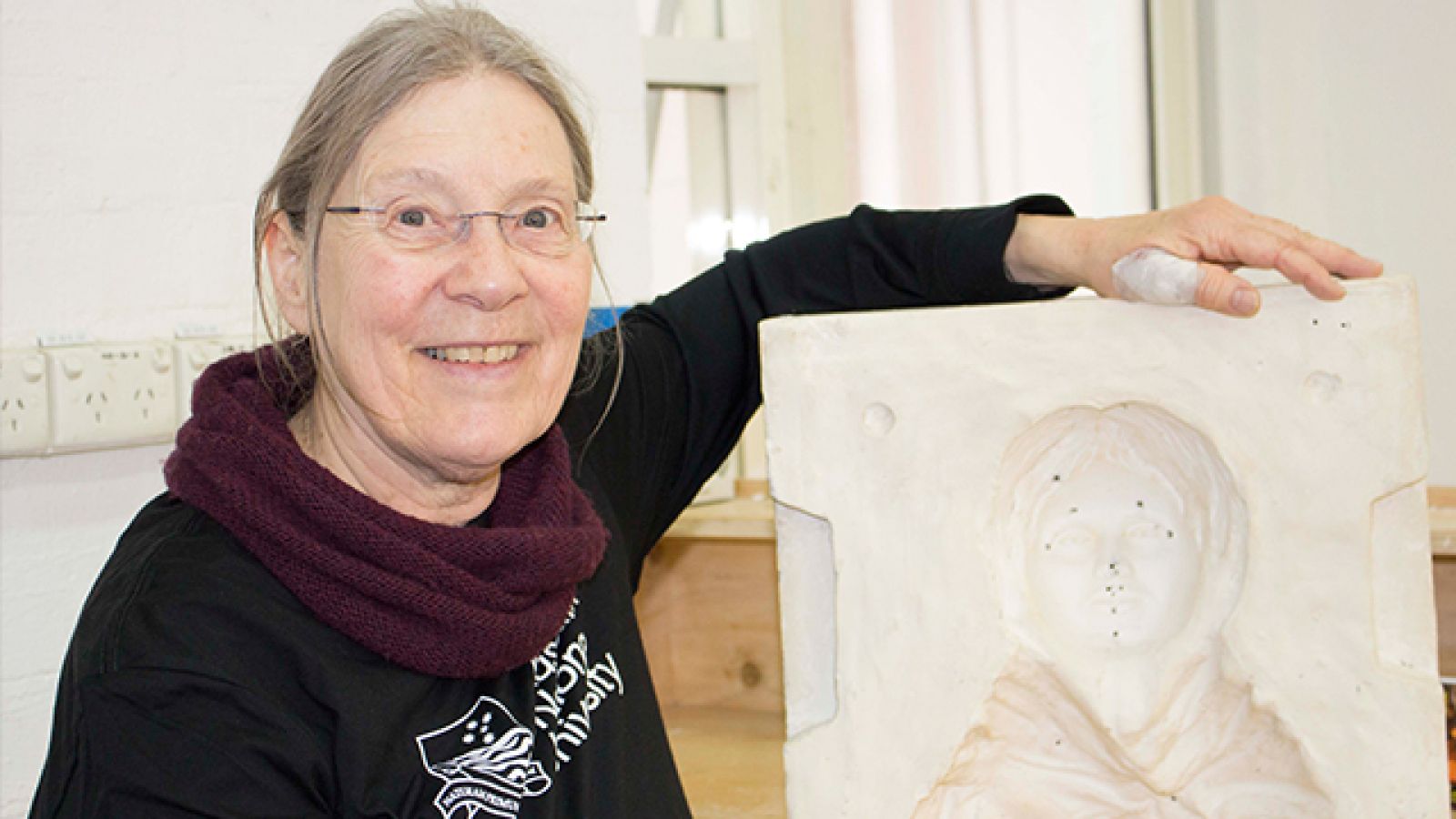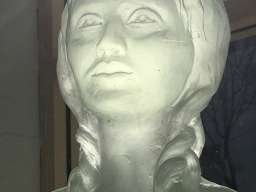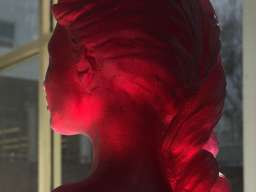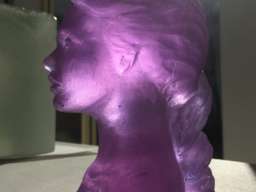Mary Louise's epic journey to ANU Glass Workshop

Mary Louise White with the mold for Blanket Stories
Mary Louise White came a very long way to do further study with the Head of the ANU Glass Workshop.
“I live just outside of London, Ontario,” she says. “I really wanted to come to Australia but I don't fly very well.”
She took a train between Ontario and Los Angeles, then crossed the Pacific in a 22 day trip by ship. From Sydney, she took the bus to Canberra.
Mary Louise met Associate Professor Richard Whiteley in 2015 at the glass workshop in Corning, New York, where she’d taken a two-week short course with him.
“Since then, I've really tried to come here. I managed to get over all the hurdles, and here I am.”
Having taught at the University of Western Ontario in the teacher's college and studied with many very fine glass teachers and artists, Mary Louise feels that she knows good teaching when she sees it.
“Of all those really fine teachers, I felt that Richard gave me the most – I learned the most from him in the shortest amount of time, and he was a very inspiring teacher,” she says.
Mary Louise completed her Graduate Certificate in Visual Arts at the ANU School of Art and Design, concentrating on casting glass, in June. Across her five months at ANU she did a lot of model making, research, and realised several pieces in glass.
One is a very large head of a girl with pigtails weighing nine kilograms. She’s one of a few pieces that refer to murdered and missing Indigenous women in Canada.
Mary Louise explains another work, a hollow form she created that looks like a 3D rectangular object.
“Glass surrounds the form, but when it comes out of the kiln and the refractory materials are removed, you're left with a hollow that's in the shape of a woman.
“So it's clear there was a woman there. But her absence is now what's recorded in the glass.”
The woman’s absence is most noticeable in light.
“So it's referring to bringing the stories of these women and cases of these women into the light.
“By casting them as hollow forms, we document their absence but we also shed light on it.”
At the time of Mary Louise’s departure, she’d created a mold that had yet to be used. It’s called Blanket Stories.
“This huge mold is going to be used for blowing into with molten glass on the end of a pipe – so, make a bubble and drop it in and blow that bubble into the form that the mold is.
The two-part mold features a collar to trap heat.
“You have to drill holes through the face and different parts of the mold in order to let the steam escape, because there will be a great deal of pressure and steam.
“So it's a funny looking thing,” she laughs.
“But hopefully you will see the form of the woman emerge afterwards.”
Blanket Stories references numerous Canadian tales. The predominant one concerns the heavy duty, iconic woollen blankets produced by the Hudson’s Bay Company, which purports to be the oldest company in North America, founded in 1670. The blankets were traded by unregulated fur traders for beaver skins and pelts from First Nations peoples.
“At that time, there was a great deal of trust between the native community and the traders and the Hudsons Bay Company. And so the blanket is a symbol of that trust,” Mary Louise says.
“There was an incident where smallpox got into the blankets and a lot of the native community was decimated.
“Nobody knows whether that was intentional or just a thing that happened. But it was the beginning of the eroding of trust between the white man and the Indigenous peoples.”
Mary Louise adds that many of us are conceived under blankets.
“We're born under blankets, or on blankets. Stories are told in campfires with blankets wrapped around our shoulders, and that's really the image that this is: it's a campfire story,” she says.
“But there are so many stories within the blanket. So all of these stories are coming to light in glass. Because glass lets the light in.”
The ANU School of Art and Design will be showcasing its offerings in all of its workshops on Open Day on 26 August. Prospective students are also invited to have their folios reviewed. To book and learn more about their offerings on Open Day, visit their website.



